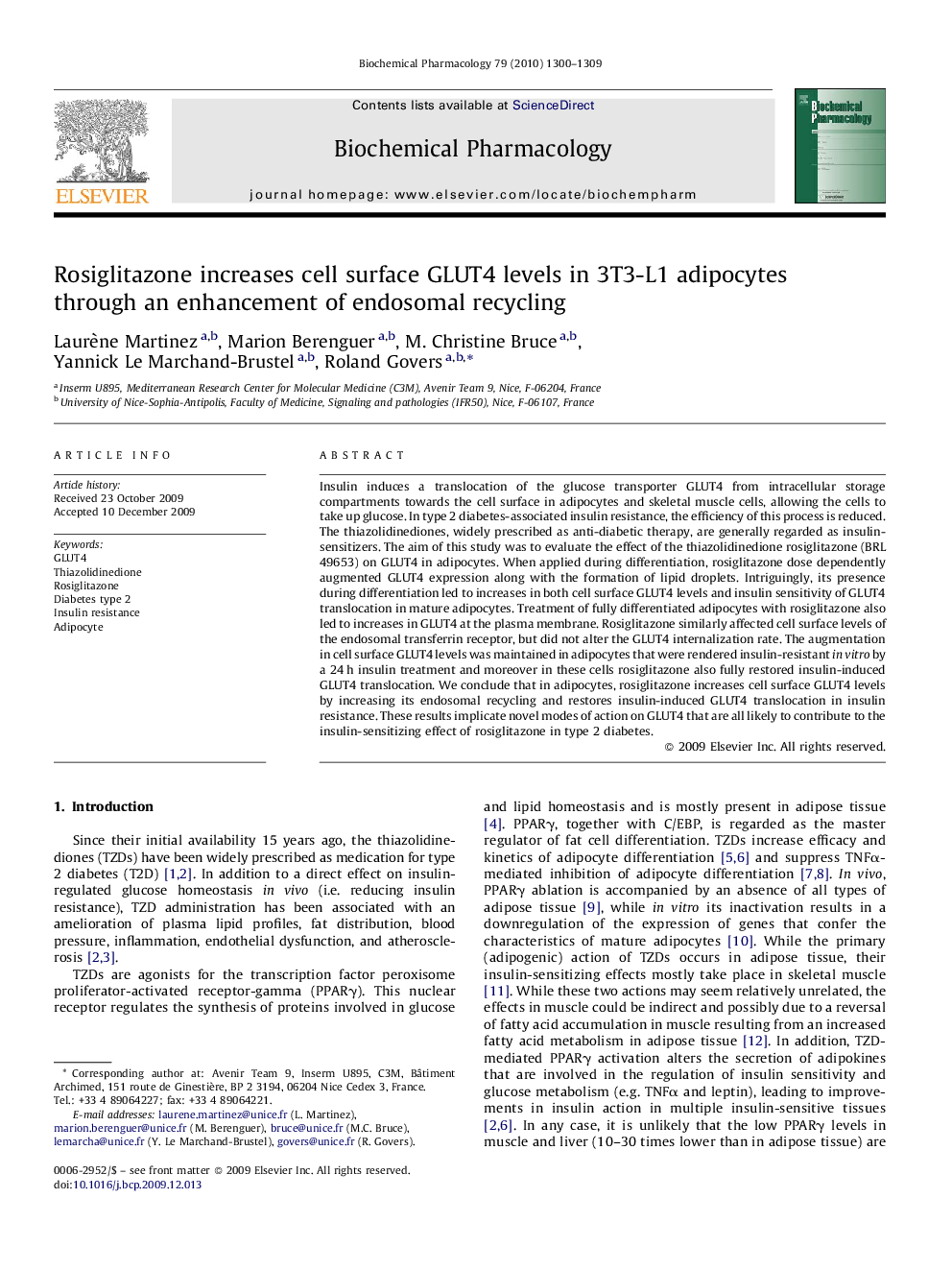| Article ID | Journal | Published Year | Pages | File Type |
|---|---|---|---|---|
| 2513672 | Biochemical Pharmacology | 2010 | 10 Pages |
Insulin induces a translocation of the glucose transporter GLUT4 from intracellular storage compartments towards the cell surface in adipocytes and skeletal muscle cells, allowing the cells to take up glucose. In type 2 diabetes-associated insulin resistance, the efficiency of this process is reduced. The thiazolidinediones, widely prescribed as anti-diabetic therapy, are generally regarded as insulin-sensitizers. The aim of this study was to evaluate the effect of the thiazolidinedione rosiglitazone (BRL 49653) on GLUT4 in adipocytes. When applied during differentiation, rosiglitazone dose dependently augmented GLUT4 expression along with the formation of lipid droplets. Intriguingly, its presence during differentiation led to increases in both cell surface GLUT4 levels and insulin sensitivity of GLUT4 translocation in mature adipocytes. Treatment of fully differentiated adipocytes with rosiglitazone also led to increases in GLUT4 at the plasma membrane. Rosiglitazone similarly affected cell surface levels of the endosomal transferrin receptor, but did not alter the GLUT4 internalization rate. The augmentation in cell surface GLUT4 levels was maintained in adipocytes that were rendered insulin-resistant in vitro by a 24 h insulin treatment and moreover in these cells rosiglitazone also fully restored insulin-induced GLUT4 translocation. We conclude that in adipocytes, rosiglitazone increases cell surface GLUT4 levels by increasing its endosomal recycling and restores insulin-induced GLUT4 translocation in insulin resistance. These results implicate novel modes of action on GLUT4 that are all likely to contribute to the insulin-sensitizing effect of rosiglitazone in type 2 diabetes.
Graphical abstractFigure optionsDownload full-size imageDownload as PowerPoint slide
